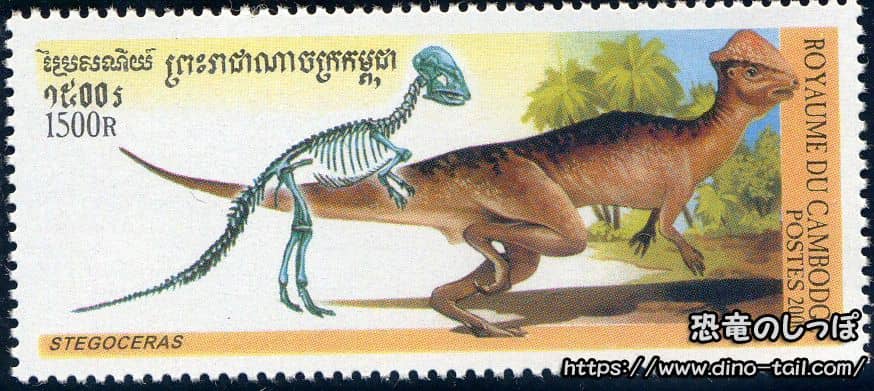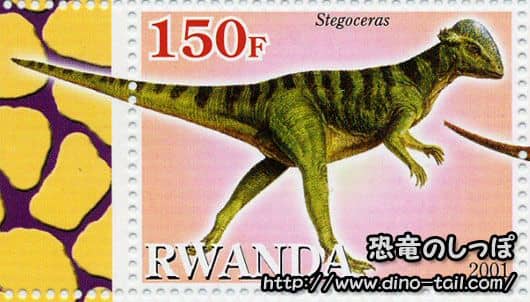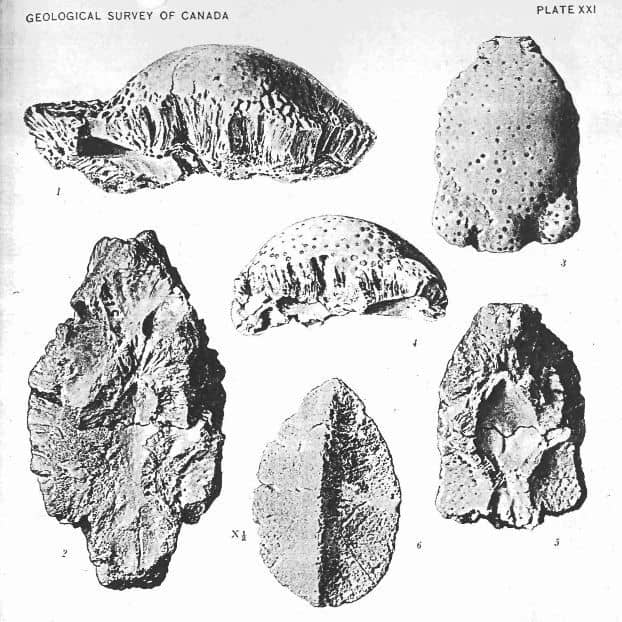About Stegoceras
| Scientific Name (Genus) | Stegoceras |
| Meaning of Name |
Horned roof
stegos (roof) [Greek] - keras (horn) [Greek] |
| Classification | Ornithischia, Marginocephalia (Pachycephalosauria) |
| Total Length | Approx. 2 - 3m |
| Diet | Herbivorous |
| Period | Late Cretaceous (approx. 77.5-74 million years ago) |
| Sub-classification/Species | Stegoceras validum |
| Year of Paper Publication | 1902 |
| Publication |
New genera and species from the Belly River Series (mid-Cretaceous).
Geological Survey of Canada, Contributions to Canadian Palaeontology. 3. by Lawrence Lambe. 1902. |
Features: A Key Specimen for Understanding Pachycephalosaurs
Stegoceras is a pachycephalosaur closely related to Pachycephalosaurus that lived in North America during the Late Cretaceous. While Pachycephalosaurus is known mainly from skulls, Stegoceras has relatively complete skeletal remains, making it a scientifically crucial specimen for understanding the overall body structure of pachycephalosaurs.
Head-butting Domes and Sexual Dimorphism

The top of its head was a thick dome, presumed to have been used for head-butting in territorial disputes or fights over mates. It is known that there were two types of domes: a wide, robust type and a more slender, gracile type. The prevailing theory is that this was a case of sexual dimorphism , representing the difference between males and females.
Rare "Gastralia"
Additionally, Stegoceras was very unusual for an ornithischian dinosaur in that it had "gastralia," or belly ribs, which are separate from the main rib cage. These are thought to have supported the abdominal wall and aided in breathing.

Some of its small teeth have been found with serrated edges, suggesting it may have supplemented its plant-based diet with insects. The possibility of it being an omnivore has also been pointed out.
"Ornatotholus" as a Growth Stage
Just as "Dracorex" is now considered a juvenile Pachycephalosaurus, it is now almost certain that Stegoceras had a similar growth stage.
A small pachycephalosaur with a flat-topped head, discovered in Alberta, Canada, was once thought to be a separate genus called Ornatotholus . However, subsequent detailed research has revealed that Ornatotholus was not an independent dinosaur but rather a juvenile (young) Stegoceras whose dome had not yet developed .
This discovery is crucial evidence showing that many pachycephalosaurs underwent dramatic changes in head shape as they grew, from a flat head to a thick dome.
Discovery and Publication
Between 1898 and 1903, Canadian paleontologist Lawrence Lambe collected three partial skull fossils from the Red Deer River area in Alberta.

Source: New genera and species from the Belly River Series (mid-Cretaceous). Geological Survey of Canada, Contributions to Canadian Palaeontology. 3. by Lawrence Lambe. 1902.
In 1902, he described it as a new genus and species, Stegoceras validum. Lawrence Lambe initially suggested that the bone texture of the dome was similar to the nasal horn core of Triceratops. He could not rule out the possibility of it being a stegosaur. Due to the lack of postcranial fossils, he was unable to determine the overall appearance and classification of Stegoceras.
In 1924, American paleontologist Charles W. Gilmore reconstructed the head using a specimen of the back of the skull. In 1943, it was classified as a pachycephalosaur by Barnum Brown.
